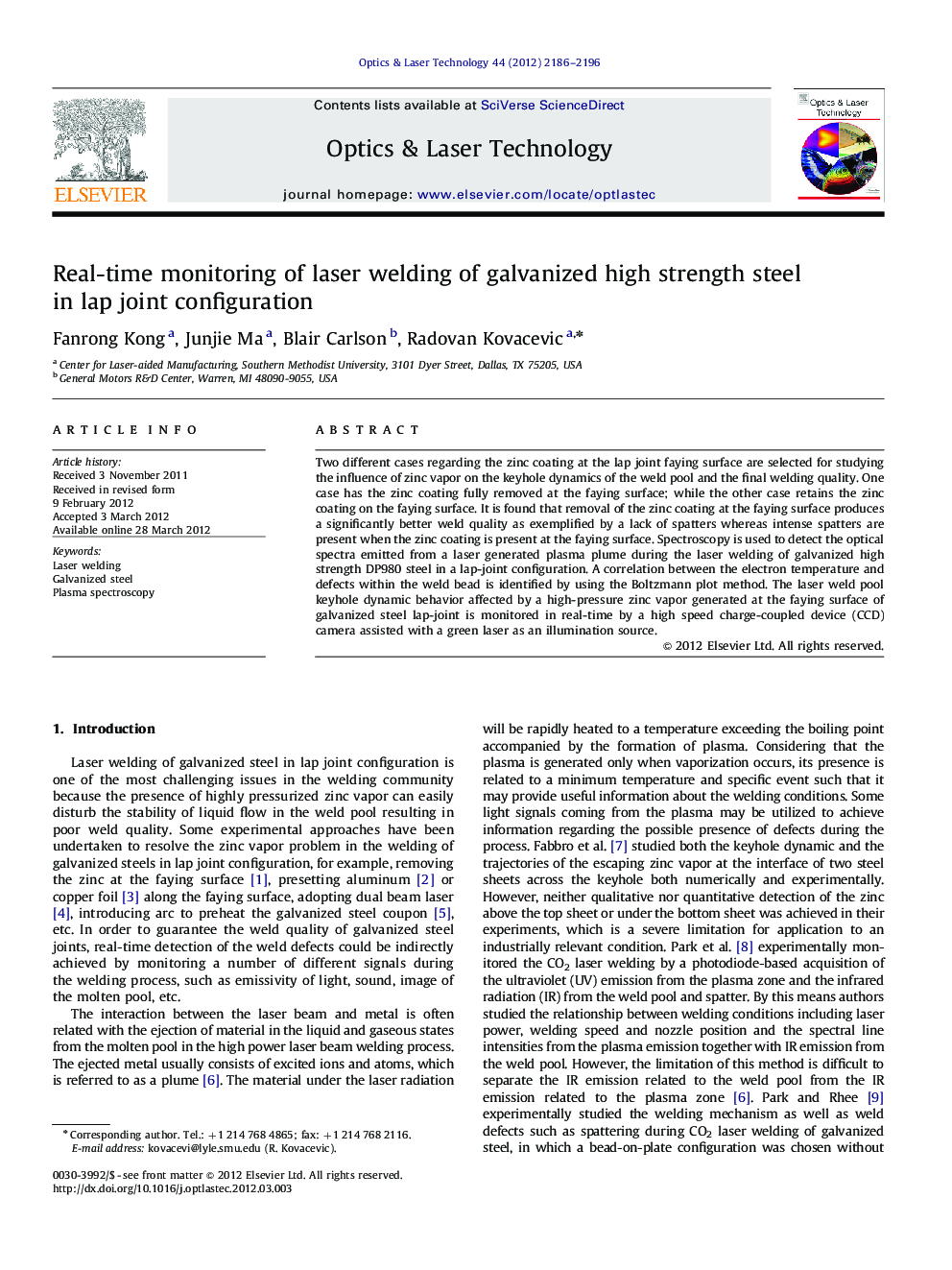| Article ID | Journal | Published Year | Pages | File Type |
|---|---|---|---|---|
| 732393 | Optics & Laser Technology | 2012 | 11 Pages |
Two different cases regarding the zinc coating at the lap joint faying surface are selected for studying the influence of zinc vapor on the keyhole dynamics of the weld pool and the final welding quality. One case has the zinc coating fully removed at the faying surface; while the other case retains the zinc coating on the faying surface. It is found that removal of the zinc coating at the faying surface produces a significantly better weld quality as exemplified by a lack of spatters whereas intense spatters are present when the zinc coating is present at the faying surface. Spectroscopy is used to detect the optical spectra emitted from a laser generated plasma plume during the laser welding of galvanized high strength DP980 steel in a lap-joint configuration. A correlation between the electron temperature and defects within the weld bead is identified by using the Boltzmann plot method. The laser weld pool keyhole dynamic behavior affected by a high-pressure zinc vapor generated at the faying surface of galvanized steel lap-joint is monitored in real-time by a high speed charge-coupled device (CCD) camera assisted with a green laser as an illumination source.
► Spectroscopy is used to detect the optical spectra from laser induced plasma. ► Boltzmann plot method is used to study the correlation between the electron temperatures and weld defects. ► The keyhole dynamic behavior of the weld pool is affected by a high-pressure zinc vapor. ► Increasing the welding speed can reduce penetration depth and increase intensity of spatter formation.
